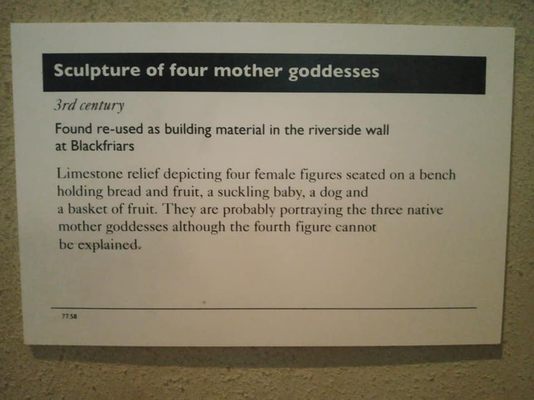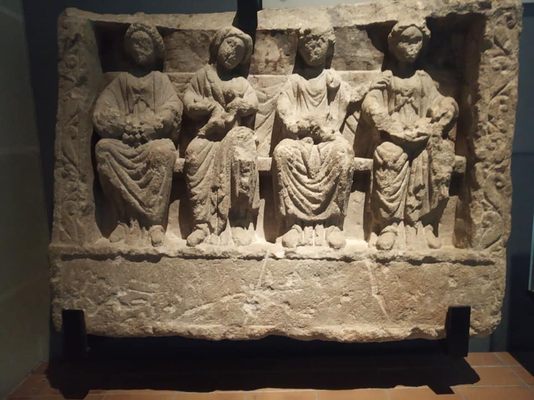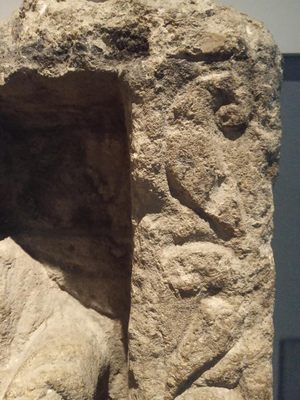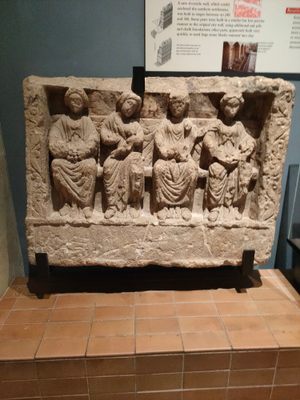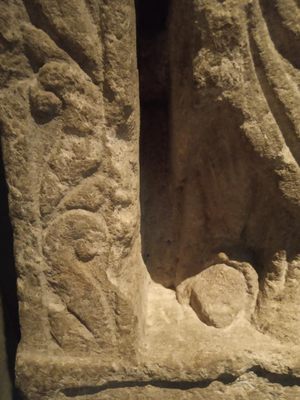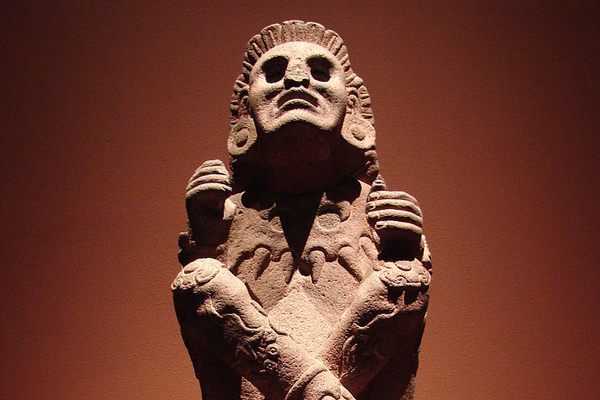About
This sculpture, which dates from the third century, portrays three Celtic goddesses and a mysterious fourth figure. The artwork highlights that unlike in Greco-Roman cultures, the Celts had multiple mother or fertility goddess in their cosmovisions.
The mother goddesses were typically envisioned to be different women who represented various aspects of fertility and were worshipped across Gaul (What is now France), Hispania (Spain), and the British Isles. At this time in human history, many aspects of the cosmos and the natural world were believed to be imbued with a female energy that existed in a state of duality with the masculine.
In the sculpture, the first goddess holds a branch of ripened grapes in her hands, symbolizing agricultural fertility and bounty. The second goddess breastfeeds an infant, likely symbolizing human reproduction and motherhood. The third goddess strokes a small creature—the object is too eroded to clearly classify what type of beast it is—which likely represents the fertility of animal life.
The fourth figure sits slightly farther apart from the others, leading some archaeologists to question whether she’s even intended to depict a goddess. One theory holds that the enigmatic image actually depicts an aristocratic noblewoman who may have commissioned the sculpture.
Update as of November 2022: The museum will be closing as it prepares to move to its new site, The West Smithfield.
Related Tags
Know Before You Go
The sculpture is in the Museum of London. The museum is located next to the Barbican and can be reached by taking the tube to the station of the same name. Entrance to the museum is free, although a donation of £5 is recommended. The museum is open from 10 a.m. to 6 p.m. daily. Audio guides, guided tours, and talks are available for all of the galleries of the museum.
Community Contributors
Added By
Published
February 18, 2019

